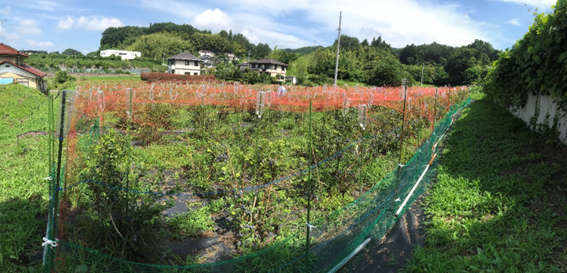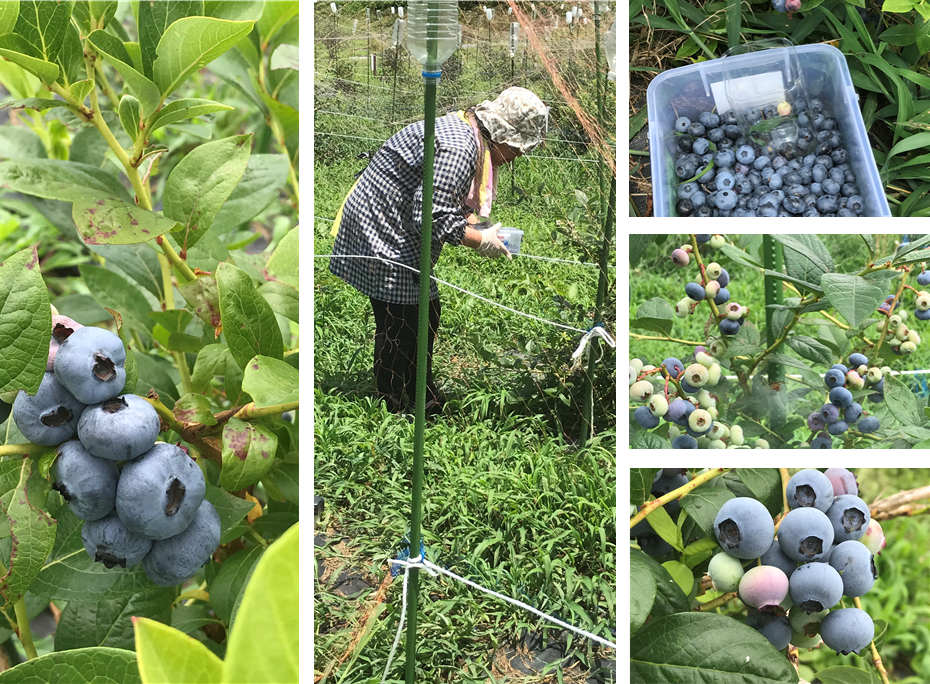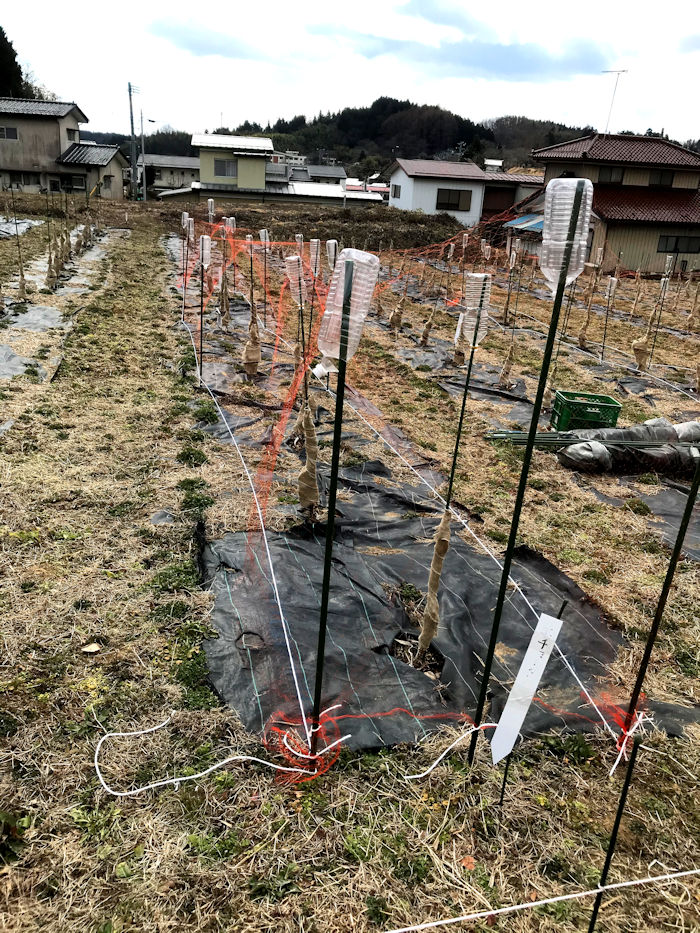Views: 30
Activity Report of Our Research Farms
My name is Tadashi Yokoyama, and I retired from the Faculty of Agriculture at Tokyo University of Agriculture and Technology 6 years ago and started growing blueberries. At 4 years ago, we moved to the Towa area of Nihonmatsu City, Fukushima Prefecture.
The Great East Japan Earthquake of 2011 caused a major shake in Fuchu City, Tokyo, where the University of Agriculture and Technology is located. At the time, I was working as a professor in the Plant Nutrition Laboratory of the Faculty of Agriculture.
Due to the accident at the Fukushima Daiichi Nuclear Power Plant, radioactive cesium fell on Fukushima Prefecture and other prefectures, causing major contamination, but we wanted to support the reconstruction of agriculture in Fukushima, and since 2012, we have been collaborating with faculty members of the Tokyo University of Agriculture and Technology to conduct research to support the reconstruction of agriculture in Fukushima from radioactive cesium contamination. we were based in the Towa district of Nihonmatsu City, Fukushima Prefecture (http://web.tuat.ac.jp/~biof-pro/index.html).
In this process, I got to know many farmers. Although it is an intermediate mountain area, I fell in love with the Towa area, and I talked to a farmer about wanting to live here when I retired from the university, and he looked for a house before I retired.
I talked to the farmer I was indebted to about wanting to become a farmer after retirement. He asked me what I was going to make, and I said I was going to make rice plants. The farmer told me that the city’s agriculture committee would not recognize me as a farmer.
The Faculty of Agriculture, Tokyo University of Agriculture and Technology is the birthplace of blueberry cultivation. The research farm of the Tokyo University of Agriculture and Technology also have original blueberry logs that have popularized blueberry seedlings throughout Japan. I had several friends who were experts in blueberries, so I decided to grow blueberries and got the approval of the farmers from the Agriculture Committee.
In May 2020, we planted 400 blueberry trees of 16 varieties in a rented 40-ares field. Currently, I am managing blueberries under the guidance of Mr. Ukawa (https://ukawa-blueberry.com/) of the Ukawa Blueberry Garden in Aizu and the professors (http://web.tuat.ac.jp/) of the Faculty of Agriculture of Tokyo University of Agriculture and Technology.
The flowers bloomed in May 2021, and Mr. Ukawa told us that we could harvest them this year, and we started harvesting them for the first time in July 2021. It was my first experience harvesting and selling berries.
2023 will be the third year of sales.
Yokoyama, the representative of the research farm, has been researching biofertilizers for many years at the Faculty of Agriculture, Tokyo University of Agriculture and Technology (https://bio-f.com/). Therefore, in line with the SDGs, we would like to test whether it is possible to use the ability of soil microorganisms to produce sustainable agriculture that is environmentally friendly to the global environment, using a blueberry garden as a model. In addition, the Towa district of Nihonmatsu City, where the farm is located, is a mountainous area. The population is declining and the number of fallow land is increasing. I would like to see what methods are available to make a profit from agriculture in such an area.
By the way, the Faculty of Agriculture at Tokyo University of Agriculture and Technology, where I worked, is the birthplace of blueberries in Japan.

(https://www.tuat.ac.jp/)

(FS Center, University of Agriculture and Technology https://web.tuat.ac.jp/~fscenter/ Here is the first blueberry log cultivated and researched in Japan. )
We are proceeding with cultivation under the guidance of blueberry experts at the Tokyo University of Agriculture and Technology.
In the 2023 growing season, we implemented measures from spring to control the scarab beetles that caused fruit damage the previous year, successfully reducing their population. However, in September, a large number of hornets invaded our blueberry orchard and caused significant fruit damage. While hornets are considered beneficial insects for controlling pests, we were surprised by the extent of the fruit damage they caused. As a result, we lost about two weeks’ worth of harvest, leading to a significant loss of income. This experience has taught us that, in addition to scarab beetles, we must also take measures to control hornets next year.
I will be posting blog updates soon about the period from 2021 to 2024.

The early-maturing variety Ozeki Blue is harvested when the fruit stalk turns red.

Echota has also come to color. Harvest is near.
June 2022
Before the blueberry fruit began to bear fruit, we put up a bird-proof net and a beast-proof net to prevent the invasion of leafhoppers.

April 2022
Flowers have begun to bloom in the blueberry garden.




March 2022
I started preparing for planting new blueberry seedlings.


February 2022
It was cold this year, and the blueberries were buried in the snow and frost damage occurred.
In particular, frost damage was strong on the rabbit eye strain.

November 2021
The autumn leaves have finally begun.

December is approaching, but the flowers are blooming. The fruit has also been made. It is said that blueberries cannot bloom unless they are exposed to low temperatures for a certain period of time, and I am worried that the effects of global warming are coming out.

October 2021
Mulch was laid at the base of the blueberries, wood vinegar was sprayed from above, and nutrients were sent to mycorrhizal fungi that live in symbiosis with the roots to activate them.

September 2021
This year’s harvest is now complete, and we have finished selling our produce. We have started preparing for next year’s harvest by managing our blueberry plants.

July 2021
We recently finished harvesting our blueberries and have begun selling them to local markets.

June 2021
The Northern Highbush blueberries are loaded with plump, juicy berries.

May 2021

Our blueberry orchard is in full bloom. Last year, we picked all the flowers, but this year, Mr. Ukawa, the director of Ukawa Blueberry Farm, advised us to let some of the flowers bloom. I’m watching the flowers grow, but I’m not sure how to adjust the number of flowers. Our neighbors have commented on how beautiful and abundant the flowers are, but they’ve also suggested that we might want to reduce their number. I’ll keep an eye on things and thin them out as needed.
April 2021

The flower buds on our Northern Highbush blueberries are starting to swell. They’re so cute and pretty. We had a frost recently, but our blueberry orchard is in a windy spot, so we avoided any frost damage.
March 2021

I removed the winter protection from the blueberry bushes. I can see flower buds and leaf buds forming. It’s still cold in the Towadai district of Nihonmatsu City.

February 2021

Since hiring a professional to install bird netting costs hundreds of thousands of yen, we’re practicing installing it ourselves on our blueberry bushes.

As various wild plants start growing in spring, we’ve begun installing weed control sheets to prevent them. A farmer has kindly saved the old weed control sheets that we used ten years ago in an experiment in Nihonmatsu City to select soybean lines that could absorb less radioactive cesium. Since there are holes where we planted soybeans, we’re planning to plant herbs in those areas.
December 2020

A blanket of snow has covered the blueberry orchard, and the berries have frozen solid.